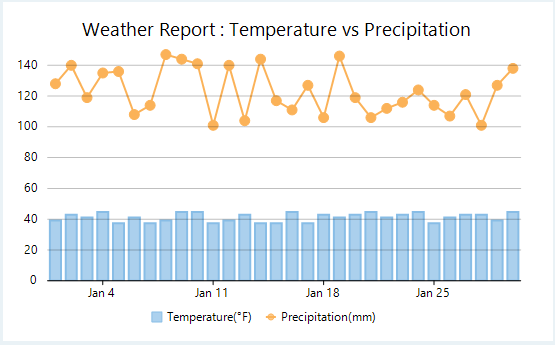Combination charts are the combination of two or more chart types in a single plot area, for instance, a bar and a line chart laid in a single plot. Combination charts are best used to compare the different data sets that are related to each other such as actual and target values, total revenue and profit, temperature and precipitation etc. Note that these charts may require multiple axes to cater different scales for different values. To know more about multiple axes, see Axes.

To create a mixed chart using FlexChart:
At design-time
Using code
To create a WinForms mixed chart through code, the first step after initializing the control is to clear the default series. Set up the data source through the DataSource property and configure the X axis by setting the BindingX property. Now, add a new series using the Add method and set the Binding and ChartType property for same. Similarly, add another series to the Series collection and set the ChartType, Binding and other relevant properties as required for this series.
Note that the above sample code uses a custom method named GetTemperatureData to supply data to the chart. You can set up the data source as per your requirements.